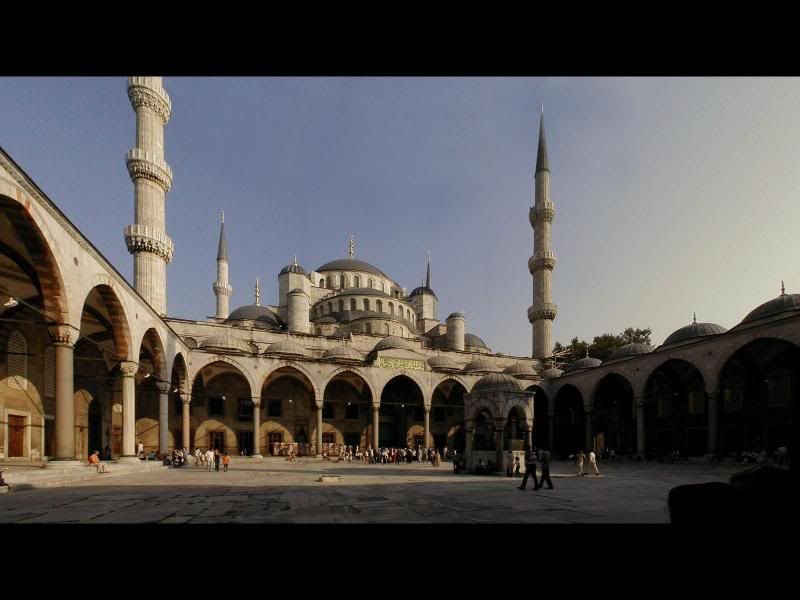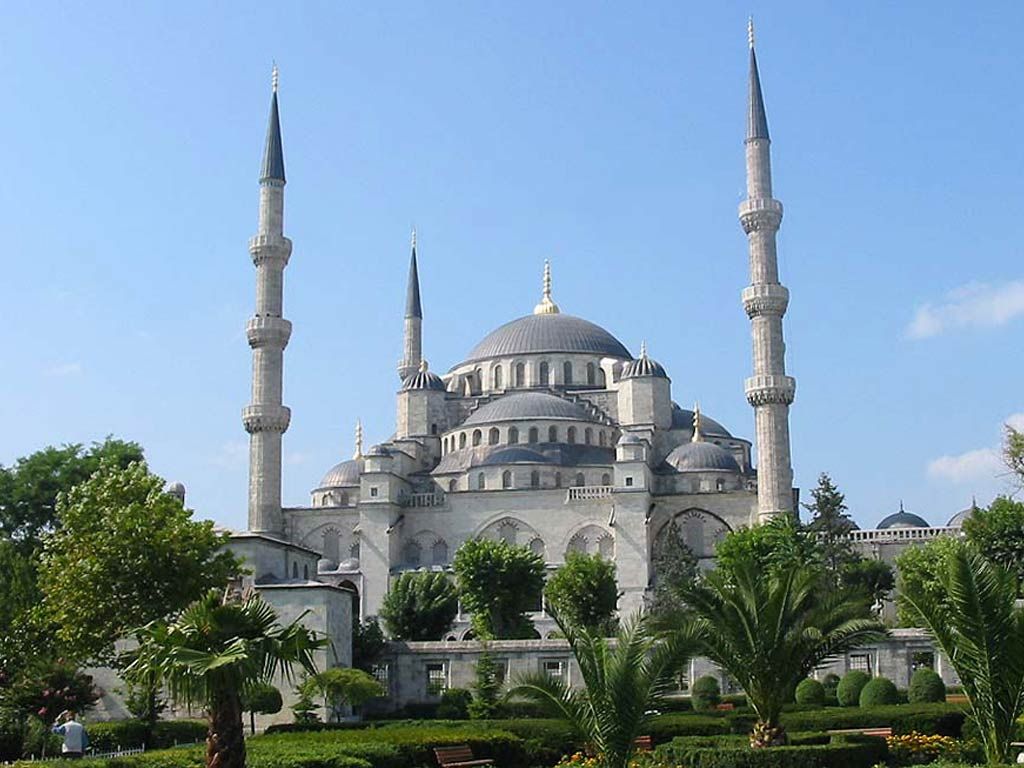
The Blue Mosque,which is one of the Istanbul's premier sights, has been constructed between the years 1609-1616 by Mehmet Aga who was one of the famous architects of the period.The location of the mosque is just opposite of the splendid Hagia Sophia as it is trying to compete with it. That is actually true because Architect Mehmed wanted to construct a bigger dome then Hagia Sophia's but he could not succeed. Instead, he made the mosque splendid by the perfect proportion of domes and semidomes as well as the splendid minarets. There is an interesting story of the mosque; according to it, Sultan Ahmet I wanted to have a minaret made of gold which is "altin" in Turkish. The architect misunderstood him as "alti" which means "six" in English. However, when the architect was shivering as "am I going to be beheaded?", the Sultan Ahmed I liked the minarets so much. Prior to that time, no sultan had a mosque with 6 minarets.The Sultanahmet Mosque is the only mosque in Turkey that has six minarets. When the number of minarets was revealed, the Sultan was criticized for presumption, since this was, at the time, the same number as at the mosque of the Ka'aba in Mecca. He overcame this problem by paying for a seventh minaret at the Mecca mosque.
Blue Mosque

The mosque , originally called “I. Sultan Ahmet Mosque” is situated in Hippodrome at the Sultanahmet Square where important Byzantine buildings stand too. The mosque complex includes a bazaar, bath and caravanserai. The Main Entrance of the Sultanahmet Mosque is on the side where the Hippodrome from the Roman Empire time stands. There are beautiful marble steps right in the middle of the courtyard, leading to the main courtyard. The marble courtyard is lovely, its marble comes from the Island of Marmara (the Turkish word for marble ,"Mermer" comes from Marmara). The mosque comprises four semidomes and a dome with a height of 43 meters supported by four pillars. The inner part is reached through three portals from the courtyard in the north of the mosque. The interior of the building is decorated with 20.143 tulips, hyacinths, carnations and ivy's. The mosque is also called “Blue Mosque” due to the blue tiles used in the interior decoration of the mosque. During the restoration works of the tiles dark blue colour was used instead of the original light blue colour. On the west side of the mihrab in front of the main entrance there stands the marble pulpit. The mausoleum of Sultan Ahmet is situated to the north and the bazaar of the complex to the east of the building. The mosque is the only mosque having six minarets. Today in the park in front of the Sultanahmet Mosque several light and sound shows are displayed during summer and Ramadan.
The cube is topped by an ascending system of domes and semi-domes, culminating in the central dome, which is 33 meters in diameter and 43 meters high at its central point. The overall effect is one of perfect visual harmony, leading the eye up to the peak of the dome.
At its lower levels the interior of the mosque is lined with more than 20,000 handmade ceramic tiles, made at Iznik (the ancient Nicaea). Its upper levels are painted. More than 200 stained glass windows with intricate designs admit natural light, today assisted by chandeliers. On the chandeliers, ostrich eggs are found that were meant to avoid cobwebs inside the mosque by repelling spiders. The decorations include verses from the Qur'an, many of them made by Seyyid Kasim Gubari, regarded as the greatest calligrapher of his time. The floors are covered with carpets, which are donated by faithful people and are regularly replaced as they become worn out.
Blue Mosque
The most important element in the interior of the mosque is the mihrab, which is made of finely carved and sculptured marble, the adjacent walls sheathed in ceramic tiles. To the right of the mihrab is the minber, or pulpit, where the Imam stands when he is delivering his sermon at the time of noon prayer on Fridays or on holy days. The mosque has been designed so that even when it is at its most crowded, everyone in the mosque can see and hear the Imam.

Each of the minarets has three balconies, and until recently the muezzin or prayer-caller had to climb a narrow spiral staircase five times a day to announce the call to prayer. Today a public address system is used, and the call can be heard across the old part of the city, echoed by other mosques in the vicinity. Large crowds of both Turks and tourists in Sultanahmet gather at sunset in the park facing the mosque to hear the call to evening prayers, as the sun sets and the mosque is brilliantly illuminated by colored floodlights.
Source: http://www.pointsfromturkey.com http://www.guideistanbul.net
1 comment:
great wide angle shots. not sure about the last one though
Post a Comment